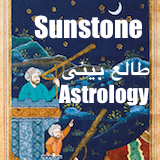Depending on the context, the Persian phrase khar-to-khar can mean different things. Etymologically, it rests on the word khar, which means an ass, a donkey, whose natural proclivity is to do its own thing and when in a drove they are hard to corral. Generally, it is agreed that colloquially khar-to-khar refers to an unsettled, chaotic or unhinged state of affairs. Its inappropriate use can be a source of embarrassment. One day as the rest of the delegation were laboring on their projects, the chief of the delegation returned from a meeting with the officials of Sierra Leone’s finance ministry looking dismayed. A senior member of the delegation asked how the meeting had gone. “khar-to-khar boud, jay-e shoma khali,” answered the chief. The chief intended to convey “wish you were there to see the chaos,” but the response sounded to most of us as “it was a congregation of donkeys; you were missed.”
The drama of recent weeks surrounding the Ukraine Question is an appropriate subject for the tag khar-to-khar. The President of the United States has a pileh problem, which is an obsessive latching on to something or an idea and not letting go, like a dog relates to a bone. He somehow believes that he and only he can bring peace to Ukraine. Who knows what Trump and Putin say in their pillow-talks. Thus far, Trump says that Putin wants peace, which is as believable as a three-dollar bill. He also thinks he and Putin can achieve an end to the war without Ukraine or the rest of Western Europeans having a say! Both Trump and his secretary of defense Pete Hegseth have decided that Ukrainian membership in NATO is not realistic and Ukraine getting back its territories under Russia occupation, including Crimea, is even less so.
When asked what Russia is giving up in return for Ukraine giving up the occupied territories and prospects of its membership in NATO, Trump went on a long non-answer as if to suggest that the Russians are giving up on their desire to seize the rest of Ukraine and also not to lose more men to the war! Zelenskyy’s position is one of every victim of unprovoked invasion – he wants all his territory back, he wants reparations, he wants the repatriation of abducted and forcibly transferred Ukrainians, he wants back his prisoners of war, he wants reparations for all the devastation, and he wants to be a member of NATO, and he wants to join the European Union, and he wants security guaranties to guard against another Russian invasion. As long as each party to the conflict insists on wanting ham khoda va ham khorma (both the idol made of dates and the dates making up the idol) there will be no negotiated lasting peace.
Meanwhile, the president of the European Union Ursula von der Leyen has characterized Trump’s pre-negotiation give-aways to Putin as appeasement, which as Europeans know does not end well. The use of the term “appeasement” harks back to the time when in 1938 Britain, France, and Italy, without including the Czechoslovak government signed an agreement with Adolph Hitler which allowed him to annex Sudetenland (German-speaking territory then within Czechoslovakia); in exchange, Hitler promised not to take the rest of Czechoslovakia. To wrap up this shameful episode of European diplomatic history, upon his return to London the British Prime Minister Neville Chamberlain declared the agreement as having purchased “peace for our time!” In the next year, German forces invade Poland and the rest is history, as they say. Because Trump lives in the past, it is entirely possible that he wishes to end further bloodshed in Ukraine at least for as long as his time – after he leaves office the Russians will be free to finish the job of absorbing all of Ukraine. No security guarantee, no NATO membership, no legal mumbo-jumbo penned in agreements will stand in Russia’s way or be a reason for the United States or the Europeans to face down Russia, particularly if such agreements involving the U.S. are not ratified by the U.S. Senate.
Russia under Putin will take over Ukraine, bit by bit, if necessary. In his view of the world, Russia is the steward of Russian and other associated Slavic cultural and lingual ramifications and as such sees itself as the preeminent power and guardian of that heritage. This was the ethno-lingual impulse that underwrote the unification of German principalities and later fueled Hitler’s policy of taking over all German-speaking territories of Europe. This anthropo-geographical argument is as familiar in political geography as are the concepts of lebensraum “living or vital space” or “resource acquisition” are justifications for wars of necessity in geopolitics.
Putin invaded a country to which the Soviet and Russian Federation in multiple international agreements had promised respect for its territorial integrity and inviolability its frontiers – and yet, here we are. First he took over and annexed Crimea and later his forces (in or out of uniform) ate up other parts of Ukraine and then in February 2022 he outright invaded the rest of Ukraine with the aim of swallowing it whole and erasing its national identity. There is one thing that one must understand about the Russians. They are very good at covering every imperial pursuit in legal cloak. Most if not all constituent soviet republics that made up the Soviet Union entered into the Union by virtue of a “treaty,” as if arrived at willingly. Most if not every “friendship” agreement that it signed was a con job to the detriment of the lesser party. Let’s face it, pacta sunt servanda (obligation to observe treaties) means diddles in international relations when it comes to a country’s strategic objectives, and more so in the case of the so-called Great Powers, especially Russia and United States.
A brief review of some of the salient aspects of Russo-Ukrainian relations may help with the understanding of all this contemporary bad-blood between the two countries –:
As a distinct ethnic grouping, the Ukrainians (Little Russians or Ruthenians) developed into a political and military entity in the 17th century as the Zaporozhe Cossacks, who revolted against the Poles and became a vassal-state of Muscovy (Russia) in 1654, with which they entered into a political union in the Treaty of Pereiaslav.
Beginning in 1667, Russia annexed bits and pieces of Ukraine, including Kiev, to which later were added more lands of the Poles and lands of the Ottoman Turks. In December 1917, Ukraine was proclaimed as a Soviet Republic and, after a brief German occupation, it joined the Soviet Union in 1922. In 1940, the autonomous Moldavian region was separated from Ukraine to become Moldavian Soviet Socialist Republic. Ukraine was admitted to the United Nations in 1945 as an independent state (country). The admission of Ukraine and Belarus to the United Nations was a prerequisite for the Soviet Union's joining the United Nations; this arrangement gave effectively the Soviet bloc two additional votes in the General Assembly of the United Nations, which at the time consisted of 51 founding-member countries.
In 1783, Russia annexed Crimea and things were humming along until 1854 when all hell broke loose and morphed into the fabled Crimean War. Upon the Russian Revolution (1917), the Bolsheviks took over Crimea and made it into an autonomous soviet republic within the Russian Soviet Federative Socialist Republic. After the end of the German occupation, the Soviets retook Crimea in 1944 and following a Stalinist purge of Tatars from the peninsula in the next year the region lost its “republic” status and became an oblast, a minor administrative division, within the RSFSR. In February 1954, the Soviet Union transferred the oblast to the UkrSSR on the 300th anniversary of the aforementioned Pereiaslav Treaty.
Upon the dissolution of the Soviet Union, Ukraine emerged in 1991 as a country free of Soviet yoke and Crimea regained its stature as an autonomous republic within Ukraine.
At the time of its liberation from Soviet domination, Ukraine was a forward base for the Soviet nuclear weapons. In 1994, Ukraine agreed to join the Treaty on Non-proliferation of Nuclear Weapons and give up control of its nuclear weapons in exchange for security assurances by Russia, United States, and the United Kingdom. Budapest Memorandum on Security Assurances, signed at the meeting of the Organization for Security and Cooperation in Europe (December 5, 1994) – https://web.archive.org/web/20170312052208/http://www.cfr.org/nonproliferation-arms-control-and-disarmament/budapest-memorandums-security-assurances-1994/p32484 .
In the Budapest Memorandum, Russia, U.S. and UK reaffirmed their commitment to Ukraine to respect the independence and sovereignty and the existing borders of Ukraine. Furthermore, the “troika” reaffirmed, among other things, (1) to refrain from the threat or use of force against the territorial integrity or political independence of Ukraine; (2) to not use their weapons will ever be used against Ukraine except in self-defense or otherwise in accordance with the Charter of the United Nations; (3) to seek immediate United Nations Security Council action to provide assistance to Ukraine; and (4) not to use nuclear weapons against Ukraine.
In May-April 1997, Russia and Ukraine signed two agreements. Partition Treaty on the Status and Conditions of the Black Sea Fleet (https://en.wikisource.org/wiki/Partition_Treaty_on_the_Status_and_Conditions_of_the_Black_Sea_Fleet) divided the assets of the old Soviet Black Sea Fleet between the two counties, creating two national naval fleet, and set forth the terms and conditions for the Russian use of Sevastopol and other areas in Crimea for its Black Sea fleet. Three days later, the parties entered into Treaty on Friendship, Cooperation, and Partnership (https://treaties.un.org/doc/Publication/UNTS/Volume%203007/Part/volume-3007-I-52240.pdf), which provided among other things for mutual respect and confidence, strategic partnership and cooperation between the parties (Article 1) and the obligation to respect each other’s territorial integrity and confirmed the inviolability of their common border (Article 2).
Things were humming along just fine between the West and Russia even though in NATO murmurs were heard of an aggressive courtship of more former Soviet republics to join NATO. For a while, the Russians, perhaps bedazzled by the lure of potential economic and commercial gains from their relations with the West, seemed indifferent or ambivalent about such an expansion as they fancied themselves as one day joining NATO themselves! Not pleased but tolerant, Russia sat by as Poland, Hungary, and Czech Republic became NATO members in 1999 and seven more ex-Soviet countries (Bulgaria, Estonia, Latvia, Lithuania, Romania, Slovakia, and Slovenia) became members in 2004. During his last NATO summit meeting (April 2008 in Bucharest) President Bush overtly called for NATO to bring into its fold more of the former Soviet states like Ukraine and Georgia. https://www.npr.org/2008/04/02/89300373/bush-calls-for-nato-expansion-at-his-last-summit.
The prospect of Ukraine joining NATO was a bridge too far for Russia. That would have put in jeopardy the status of the Russian naval presence on Crimea. The Russian preoccupation with access to warm-water ports has been a national strategic imperative from the days of Peter the Great and remains as much today as is also Russia’s historical interest to dominate the Black Sea as if it is its internal waters. It was therefore no coincidence that in April 2010 Russia moved to nail down the territorial status of her military presence on Crimea. The Kharkiv Pact extended the lease provisions that were part of the 1997 Black Sea Fleet Partition Treaty by allowing the lease of naval facilities in Crimea to extend beyond 2017 and into 2042, with an additional five-year renewal option in exchange for a multiyear discounted contract to provide Ukraine with Russian natural gas. https://en.wikipedia.org/wiki/Kharkiv_Pact. https://en.wikipedia.org/wiki/Partition_Treaty_on_the_Status_and_Conditions_of_the_Black_Sea_Fleet.
The question of Russian naval presence on Crimea aside, the thorn that pricked the bear’s paw the most was the gradual slipping of the Ukrainian polity into the Western cultural sphere, with talks in Kiev of democracy and joining the European Union and such. Under Russian pressure, in 2013, the pro-Russian president of Ukraine (Viktor Fedorovych Yanukovych) rejected the European Union–Ukraine Association Agreement that was approved by the Ukrainian parliament. This event led to waves of protest which ultimately forced him out of office, despite strong pro-Russian counter-protests. In February 2014, “Russian forces” took control of the administration of Crimea and shortly thereafter the Russian-organized Republic of Crimea declared independence from Ukraine following a “referendum.” Russia tore up the Partition Treaty on the Status and Conditions of the Black Sea Fleet and the Kharkiv Pact and formally annexed Crimea; in return, the Ukrainian president Petro Poroshenko let the friendship treaty lapse. The Obama Administration in the U.S. and the UK, the two guarantors of Ukrainian territorial integrity under the Budapest Memorandum, did little to reverse the Russian land grab.
Today, the Russian-built Kerch Strait Bridge, which connects the Russian mainland with Crimea’s Kerch Peninsula, is perhaps the fail-safe that can make up for the loss of overland lines of communication between Russia and Crimea if Russia were to relinquish Luhansk, Donetsk, Zaporizhia, and Kherson in a peace treaty with Ukraine. Ukrainian and international recognition of the Russian annexation of Crimea is perhaps the price to be paid by Ukraine to save its very existence, but what assurance is there that the world would not sit by when next time Russia comes after the rest of Ukraine, or goes after some NATO or non-NATO neighboring country? In this game of chicken, the West has blinked and it has Obama, Trump 1.0, Biden and now Trump 2.0 to thank for it.










Comments